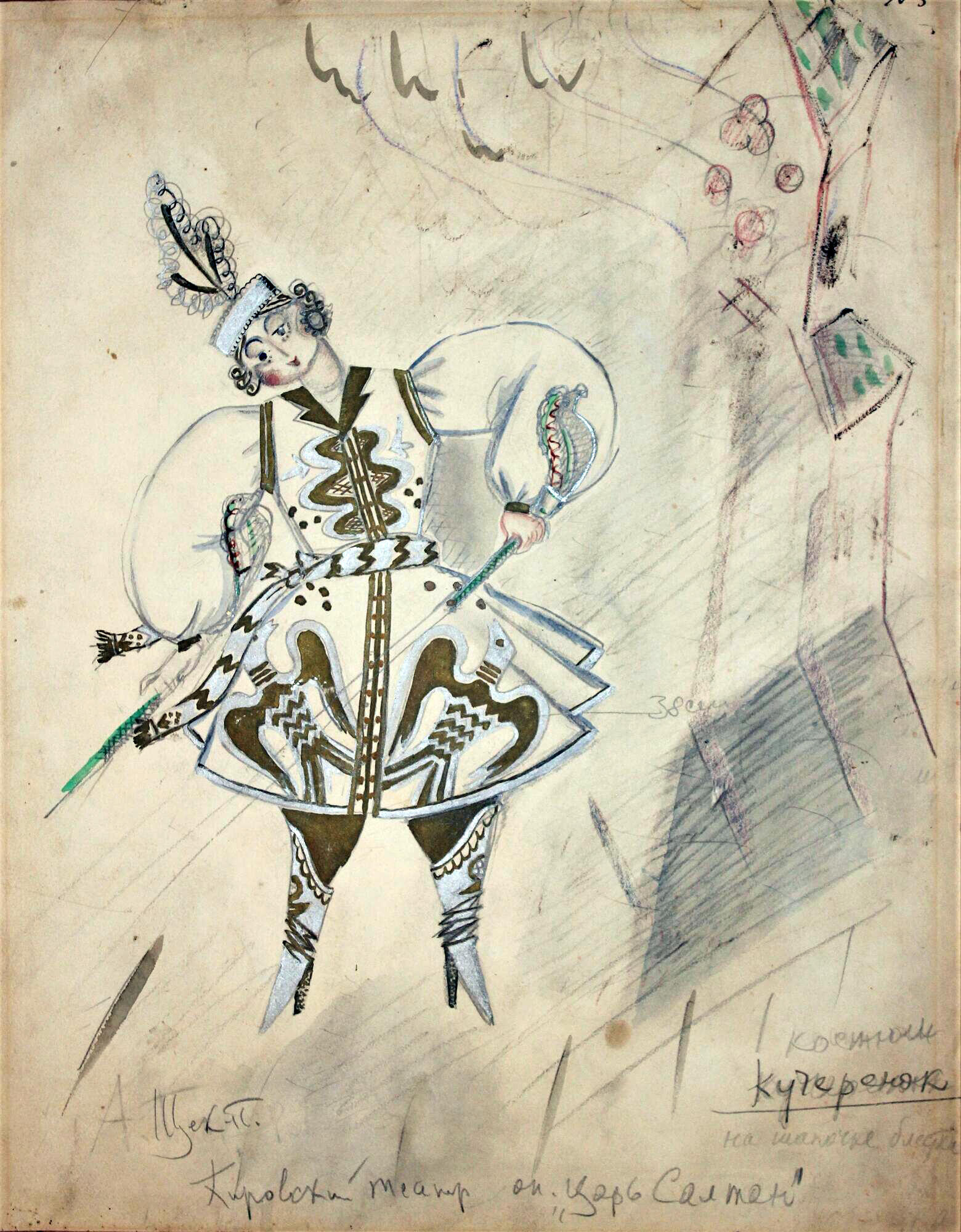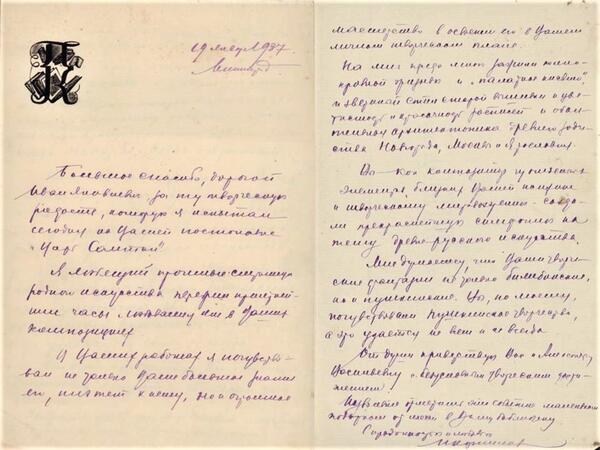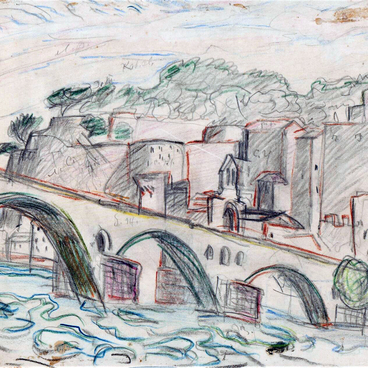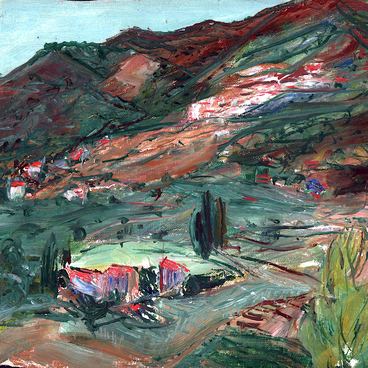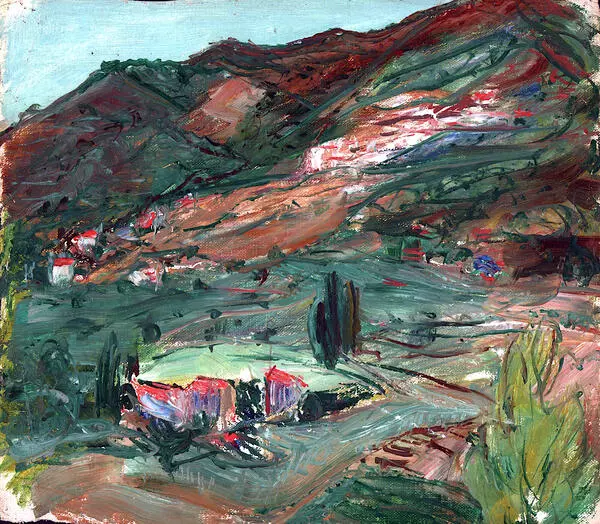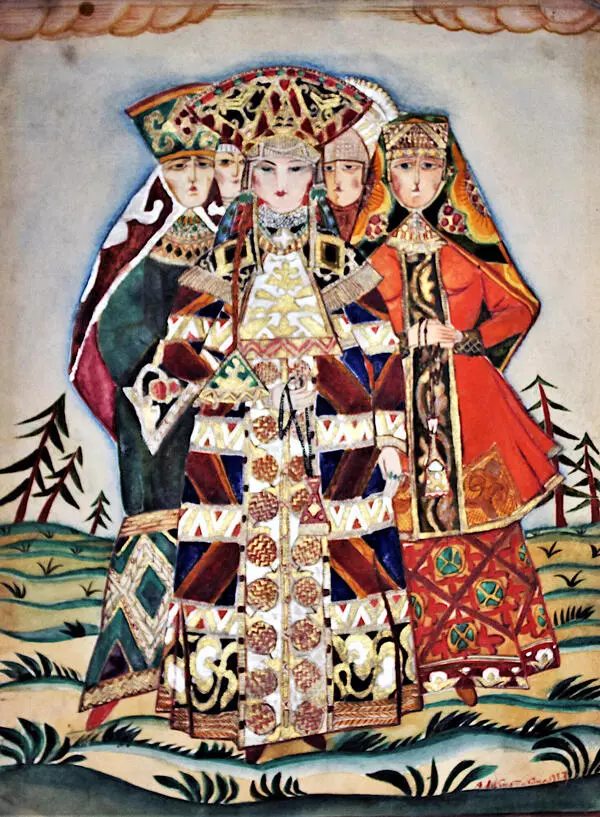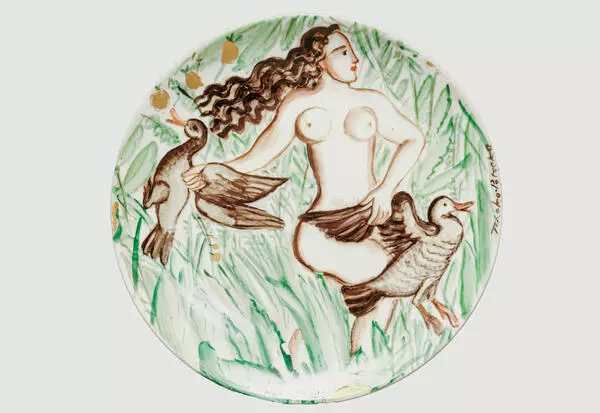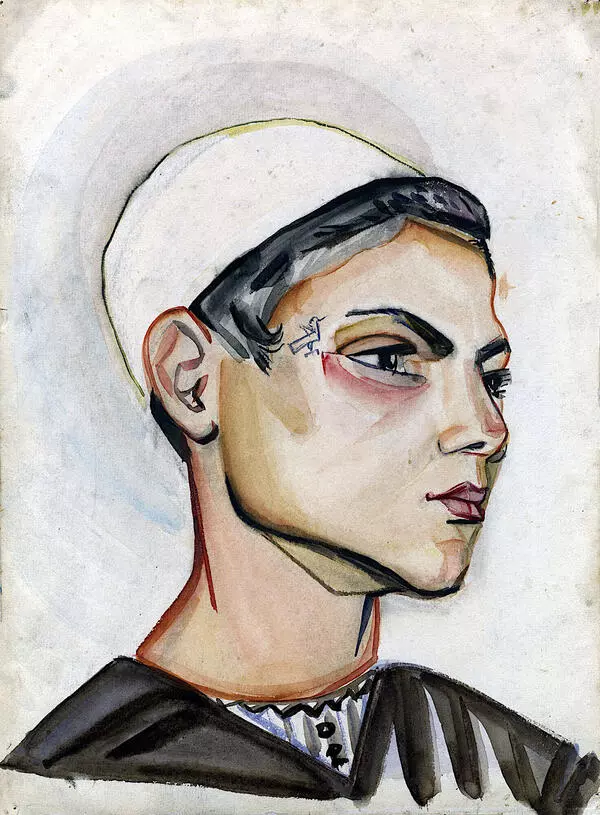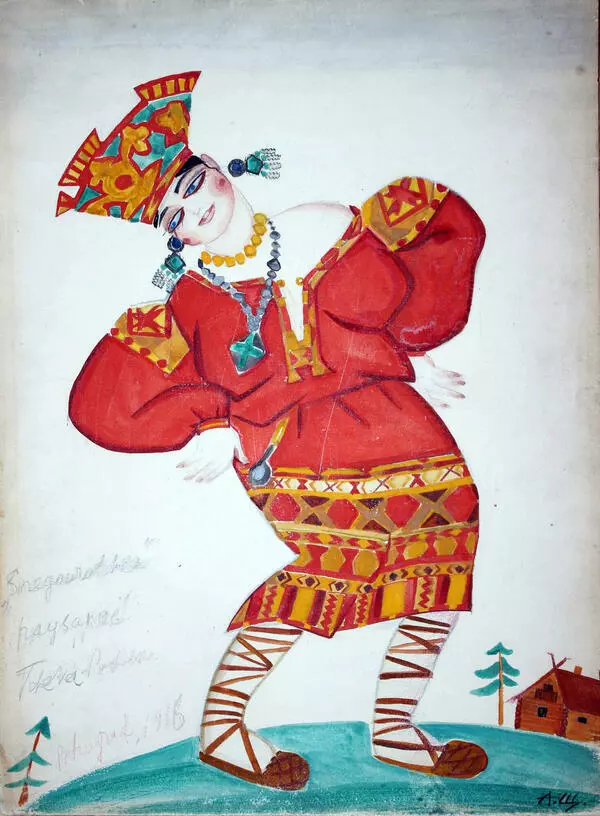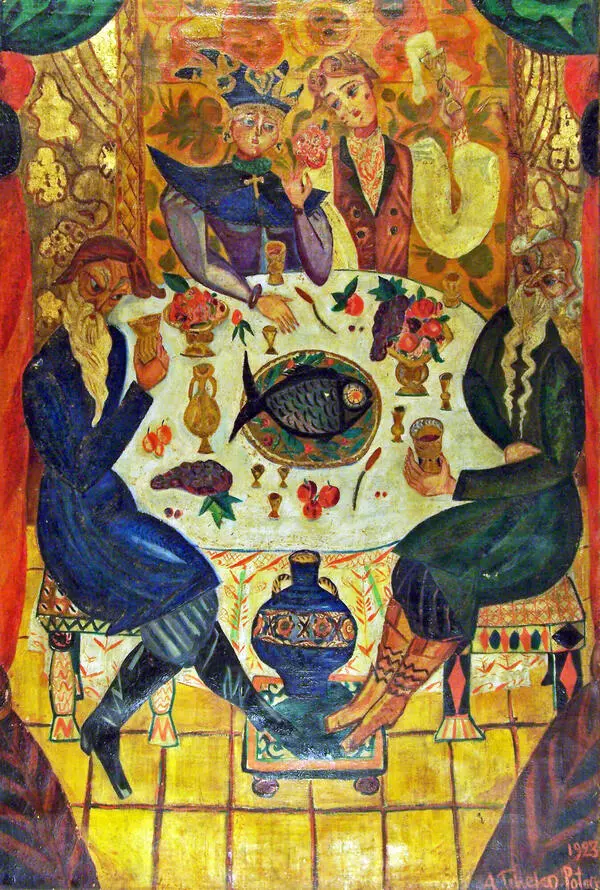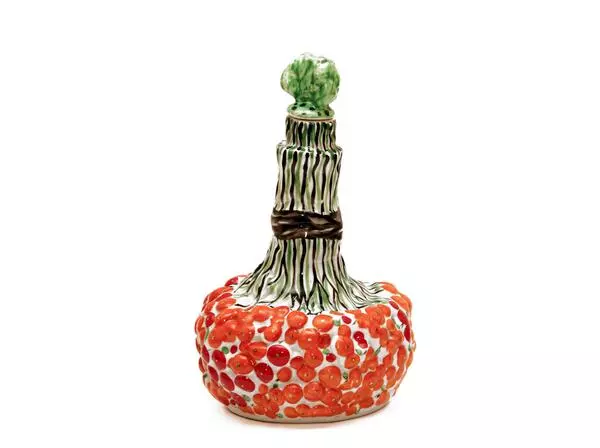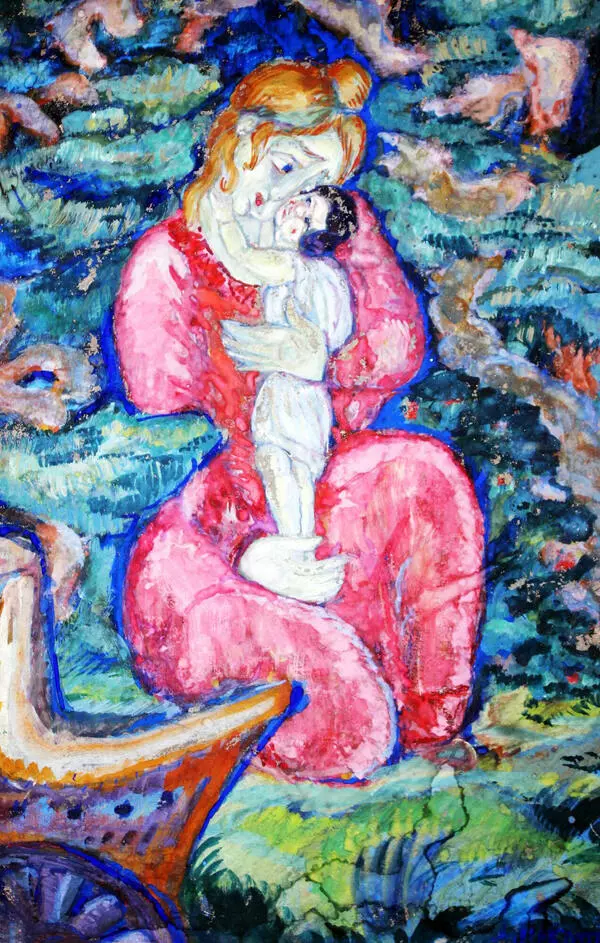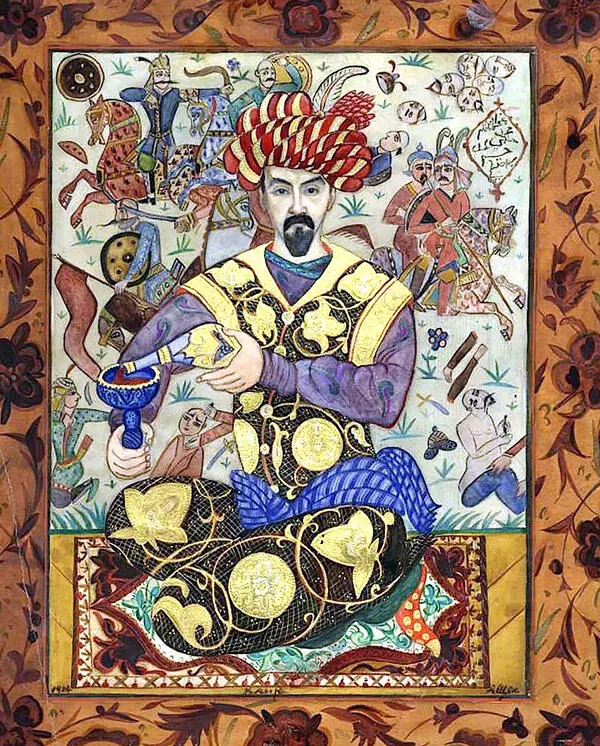In 1936, Alexandra Vasilievna Shchekatikhina-Pototskaya, together with her husband, the Russian painter Ivan Yakovlevich Bilibin, returned to her homeland, to Russia. Bilibin and Shchekatikhina-Pototskaya had a creative meeting with Leningrad artists at the Leningrad House of Artists. The meeting, which was warm and amicable, once again emphasized that their art was interconnected with national traditions.
Upon returning home, Alexandra Vasilievna immediately became part of the cultural life of Leningrad. The very next year, on January 20, 1937, the Kirov State Academic Theater of Opera and Ballet (presently — the Mariinsky Theater) premiered the Nikolai Andreyevich Rimsky-Korsakov’s opera “The Tale of Tsar Saltan” with set design executed by Ivan Bilibin and Alexandra Shchekatikhina-Pototskaya. Alexandra Vasilievna created sketches for two scenes of the fourth act. For this production, the artist made drawings of many costumes — Tsarevich Gvidon, Tsarevna Swan-Bird, as well as some other characters. These works were dignified and distinguished in their figurative and decorative solution, which corresponded to the nature of the musical and literary interpretation of the opera characters and the traditions of folk art.
From the memoirs of the director of the Kirov State Academic Theater of Opera and Ballet Nikolai Nikolaevich Gladkovsky:
Upon returning home, Alexandra Vasilievna immediately became part of the cultural life of Leningrad. The very next year, on January 20, 1937, the Kirov State Academic Theater of Opera and Ballet (presently — the Mariinsky Theater) premiered the Nikolai Andreyevich Rimsky-Korsakov’s opera “The Tale of Tsar Saltan” with set design executed by Ivan Bilibin and Alexandra Shchekatikhina-Pototskaya. Alexandra Vasilievna created sketches for two scenes of the fourth act. For this production, the artist made drawings of many costumes — Tsarevich Gvidon, Tsarevna Swan-Bird, as well as some other characters. These works were dignified and distinguished in their figurative and decorative solution, which corresponded to the nature of the musical and literary interpretation of the opera characters and the traditions of folk art.
From the memoirs of the director of the Kirov State Academic Theater of Opera and Ballet Nikolai Nikolaevich Gladkovsky:
